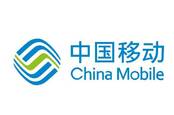This article is more than 1 year old
American tech goliaths decide innovation is the answer to Chinese 5G dominance, not bans, national security theater
Microsoft, Cisco, Google etc gang up to form Open RAN Policy Coalition
Some of America’s super-corps have remembered how the US became the dominant global technology force it is, and have vowed to use innovation over threats to counter Chinese dominance in 5G markets.
Thirty-one corporations ranging from AT&T to VMWare, and including Facebook, Google, IBM, Intel, Microsoft and Oracle, have launched what they are calling the Open RAN Policy Coalition with a goal to develop new, open, and interoperable approaches to the 5G network.
RAN stands for Radio Access Network and is the technology that connects individual devices like smartphones to other parts of the network. It comprises three main components: the radio unit (RU), distributed unit (DU) and centralized unit (CU). Each part is based in different locations and typically uses different hardware and software. Despite the enormous global use of such technology however, most of it remains proprietary, developed and controlled by individual companies.
The Open RAN Policy Coalition proposes opening this entire market up to make all aspects interoperable: a move that it hopes will allow new companies to enter the market and shake things up before next-generation 5G becomes ubiquitous.
While not all companies in the coalition are American – it also includes Fujitsu, Telefónica and Vodafone, for example – it is US-heavy and the implicit drive is that the organization will help prevent Chinese companies from taking over the 5G market.
That dominance has created global political repercussions with the US government going to extraordinary lengths to limit the take-up of equipment of Chinese companies like Huawei. The Trump Administration has banned Huawei, and others, from the US citing national security concerns. It has also exerted significant pressure on European partners, insisting that they also reject Chinese companies in their 5G plans and even threatening to withdraw from intelligence sharing agreements if they don’t. Those threats have largely fallen on deaf ears, with both Germany and the UK rejecting the demand.
Cheaper, better
But behind the threats has also sat an uncomfortable truth: Chinese companies dominate the market in large part because there aren’t many good alternatives: competing products are limited, more expensive and often inferior. And that lack of competition is in large part down to how the market has traditionally operated, with proprietary equipment creating massive barriers to entry.
The reality is that using cell sites from different companies leads to a drop-off in performance and so network operators tend to go with a single company for a specific geographic area. An interoperable approach where there is no drop-off could radically change how the new 5G networks are put together. As such, the Open RAN project hopes to “create innovation, spur competition and expand the supply chain for advanced wireless technologies including 5G.”
The Open RAN Policy Coalition is not the only group hoping to open up the market. There is also the Open Radio Access Network Alliance (O-RAN) which was started in 2018 and includes over 100 companies aimed at interoperable interfaces. And the Telecom Infra Project, headed by Vodafone, which has agreed to work with O-RAN. And there is also the Linux Foundation’s Open Networking Automation 2Platform (ONAP).
This new coalition’s role will be to push for solutions that are hardware-neutral and produce open source software standards. And one big focus for it will be to get the US government to focus less on bashing China and Chinese companies and more on the traditional approach of producing the best technology.
“The coalition believes that the US Federal Government has an important role to play in facilitating and fostering an open, diverse and secure supply chain for advanced wireless technologies, including 5G, such as by funding research and development, and testing open and interoperable networks and solutions, and incentivizing supply chain diversity,” it said in a statement.
Its executive director also had this to say: “As evidenced by the current global pandemic, vendor choice and flexibility in next-generation network deployments are necessary from a security and performance standpoint. By promoting policies that standardize and develop open interfaces, we can ensure interoperability and security across different players and potentially lower the barrier to entry for new innovators.” ®

